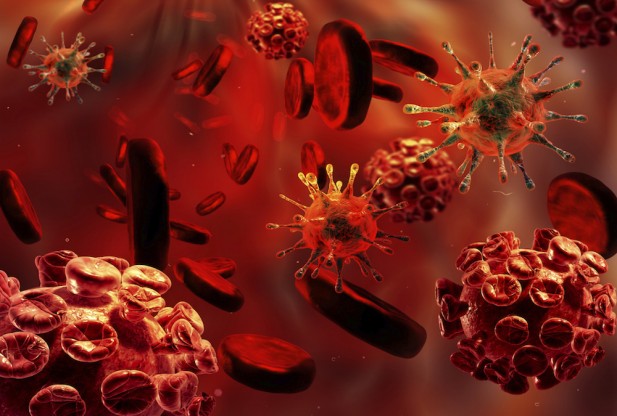
© ThinkstockViruses in the bloodstream.
With conventional methodology, researchers typically examine a patient's blood for one type of infection at a time.
However, a new technology from Howard Hughes Medical Institute (HHMI) is now
able to scan a blood sample for any of a subject's current and past infections from any known human virus, according to a new report in the journal
Science.The system, known as VirScan, can run a single test to figure out which viruses have infected an individual, as opposed to limiting their evaluation to explicit viruses. That impartial approach could discover unexpected factors impacting individual patients' health, while also growing opportunities to investigate and assess viral infections in large populations. The comprehensive evaluation can be conducted for around $25 per sample.
One-stop blood shopping"We've developed a screening methodology to basically look back in time in people's [blood] sera and see what viruses they have experienced," said study author Stephen Elledge, an HHMI investigator who led the development of VirScan. "Instead of testing for one individual virus at a time, which is labor intensive, we can assay all of these at once. It's one-stop shopping."
To develop the system, the VirScan team synthesized more than 93,000 short pieces of DNA encoding several sections of viral proteins. They introduced those pieces of DNA into bacteria-infecting viruses known as bacteriophage. Each bacteriophage then created a peptide protein segment and presented it on its own exterior. As a collective, the bacteriophage presented all of the protein sequences discovered in the over 1,000 known types of human viruses.
To execute the VirScan evaluation, the peptide-displaying bacteriophage are permitted to mingle with a blood sample. Antiviral antibodies in the blood then find and bind to viral surface proteins called epitopes found inside the presented peptides. The researchers then grab the antibodies and wash away everything, saving the few bacteriophage that cling to them. By sequencing the DNA of those remaining bacteriophage, the team can determine which viral protein pieces were snapped up by antibodies in the blood sample, showing which viruses an immune system has encountered via infection or vaccination.
Elledge said the team was shocked to see antibody responses were surprisingly among many individuals, with different people's antibodies recognizing the same amino acids in the viral peptides.
"In this paper alone we identified more antibody/peptide interactions to viral proteins than had been identified in the previous history of all viral exploration," he said.

Next its bacteria's turn to be revealed. I cant help but remember the L Margullis claimed HIV did not cause AIDS. Now, with this test, it will become evident that it does not. The developers of the test have revealed that people who have the condition known as HIV provoke many more reactions as to experienced viruses than those who do not. HIV would then appear to be a more generalized viral infection leading to others, the mother of all viruses in other words.
Remember that L Margullis oft stated she had seen no information that showed the connection between HIV and AIDS.